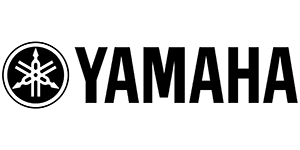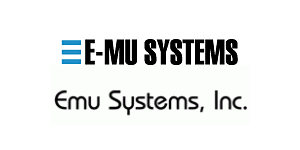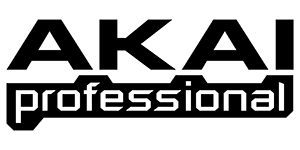The Yamaha A5000 represented in 1999 a flagship professional sampling workstation that combined unprecedented power with thoughtful design. Launched as the successor to the acclaimed A3000, this rackmount sampler delivers exceptional value through its comprehensive feature set, creative sound-shaping capabilities, and innovative approach to sample management.
Design Philosophy & Architecture
The A5000 employs a distinctive organizational structure that sets it apart from traditional samplers. At its core is the autonomous sample - each of the 960 possible samples can have independent filter settings, envelope generators, LFO parameters, and effects routing. This creates what is effectively 960 miniature synthesizers within one unit. Samples can be organized into Sample Banks for easier management, particularly useful for multisampled instruments or drum kits.
The sampler offers two operational modes: Single mode, where samples and Sample Banks are directly assigned to Program slots creating instant multitimbral setups, and dedicated Multitimbral mode, which follows the more conventional approach of assigning Programs to Multi parts with individual MIDI channels. This flexibility accommodates both newcomers and experienced users familiar with traditional sampler workflows.
User Interface
The A5000 features a substantial 13 x 3cm backlit graphic LCD display - a significant upgrade from its predecessor. While not quite matching the size of Akai's flagship displays, it provides ample space for menus, icons, and detailed waveform visualization. Five knobs beneath the display align with on-screen parameters for intuitive control, doubling as push-buttons for operation confirmation.
The front panel employs Yamaha's familiar matrix layout: five operating modes (Record, Edit, Play, Disk, Utility) intersect with six function switches, each with status LEDs. Additional controls include two front-mounted analogue inputs, headphone output, Master and Record Volume knobs, LCD contrast adjustment, and three miscellaneous function buttons. The integrated floppy drive can be replaced with a Zip removable drive for enhanced storage.
Sound Generation & Synthesis
Built on Yamaha's AWM2 tone generation technology, the A5000 delivers impressive 126-voice polyphony across 32 multitimbral parts. The synthesis architecture features comprehensive filtering with multiple modes: three types of low-pass, two high-pass, band-pass, band-eliminate, two peak filters, and various dual filter configurations. Each filter type offers adjustable cutoff frequency and resonance, with velocity modulation and keyboard scaling capabilities. The filters are notably powerful, capable of extreme bottom-end enhancement and cutting through dense mixes.
Three envelope generators per sample handle amplitude (ADSR), filter, and pitch modulation. Each sample also has a dedicated LFO with selectable waveforms (sawtooth, triangle, square, sample & hold), adjustable speed, delay, and independent depth control for amplitude, filter cutoff, and pitch. A separate Program LFO with MIDI-sync capability and programmable waveforms enables automated modulation effects ranging from TB-303-style filter sweeps to algorithmic pitch variations.
The onboard synthesis extends to seven basic waveforms, allowing sound creation from scratch without requiring external samples.
Sampling Capabilities
The A5000 handles mono and stereo 16-bit sampling at multiple rates: 44.1, 22.05, 11.025, and 5.5125 kHz through analogue inputs, with lo-fi options for the lower three rates. When equipped with the optional AIEB1 board, digital input supports 32, 44.1, and 48 kHz rates, also with undersampling options for creative lo-fi effects.
Recording features include automatic normalization for optimal signal levels, consecutive sampling for capturing multiple sounds on the fly, and automatic triggering with adjustable thresholds. The pre-trigger buffer continuously samples input, ensuring transients are never missed. Samples can be automatically mapped to adjacent keys and organized into Sample Banks or Programs during recording.
The sampler supports external CD-ROM drive control via SCSI for audio CD sampling, though audio transfer occurs through analogue connections rather than digitally.
Advanced Editing & DSP
The editing suite provides comprehensive tools for sample manipulation. Waveform trimming operates with zoomable displays down to single-sample resolution, with cursors adjustable in increments from 1 to 10,000 samples. On-the-fly punch-in of start and end points accelerates workflow.
Looping capabilities include real-time audition while holding notes, automatic zero-crossing detection, and three crossfade curves for seamless loop joins. The tempo-detection system automatically calculates rhythmic loop tempos, enabling beat-based looping and simplified time-stretching operations. Wave start address velocity sensitivity creates dynamic playback variations by triggering samples from internal positions based on velocity.
Creative DSP processes include:
Loop Remix - Randomly re-orders looped sample segments with control over pitch, direction, and sonic character. Particularly effective with rhythmic material, but also generates textures, effects, and melodic variations.
Loop Divide - Segments samples into up to 32 equal chunks mapped across consecutive keys, ideal for drum pattern deconstruction or creative reorganization of musical material.
Time-Stretching - Excellent quality with extreme stretch capability and selectable weighting between sound quality and rhythmic integrity.
Pitch Change - Independent pitch manipulation without affecting duration.
Additional Tools - Sample reverse, fade in/out, and comprehensive editing with single-level undo (requiring prior disk save).
Effects Processing
Six effect processors (three on the A4000) provide exceptional creative flexibility. The library encompasses 96 effects including multiple delay, reverb, chorus, and flange variations, plus distortion, overdrive, amp simulation, turntable effect, digital scratch, compressors, enhancers, noise gates, and unconventional effects like jump and beat-change that manipulate input signals in real time. Nine effects support MIDI clock synchronization.
Each processor offers up to 20 editable parameters, with a "favorite" option highlighting four preferred parameters for quick access. Effects quality is generally excellent, with warm modulation effects and characterful reverbs and delays suitable for creative applications. The sampler can process external audio through its effects, functioning as a standalone effects unit.
The routing architecture differs from conventional send/return systems. Samples route directly to effects processors, with a secondary output enabling parallel effect chains. While this requires conceptual adjustment, it offers powerful flexibility once mastered.
Memory & Storage
Standard configuration includes 4MB RAM, expandable to 128MB via four 32MB SIMM modules. This provides maximum sampling times of 25 minutes mono or 12.5 minutes stereo at 44.1 kHz. However, individual samples are limited to 32MB (approximately 6 minutes 20 seconds mono at 44.1 kHz), or 64MB for stereo samples.
Internal bays accommodate SCSI or IDE hard drives, with additional external SCSI connectivity. The SCSI interface also supports CD-ROM drives for audio sampling and CD burners for creating audio or A5000-format discs. Sample format compatibility is excellent, reading Akai S1000/3000, Emu EIIIx, Roland S760, WAV, and AIFF files, plus selected Yamaha synth data.
MIDI & Control
Comprehensive MIDI implementation includes six controller routing options at sample/Sample Bank level, assignable to any sample parameter including start address. Program level provides four additional routings for effects parameters and select Program-level functions.
The five front-panel knobs transmit MIDI controller data on independent channels, perfect for real-time parameter tweaking on the A5000 or external instruments. Six function buttons transmit MIDI notes for sample triggering during editing or performance.
A basic sequencer provides sketchpad recording and 16-channel Standard MIDI File playback with tempo control.
Connectivity & Expansion
Standard outputs include stereo main outputs (L/MONO, R) and two assignable outputs. The optional AIEB1 board expands to 10 analogue outputs and adds S/PDIF digital I/O (coaxial and optical) supporting 32, 44.1, and 48 kHz input frequencies with 44.1 kHz output.
Dual MIDI input pairs (A/B), MIDI Out, and dual MIDI Thru pairs (A/B) provide extensive MIDI connectivity. The rear panel includes SCSI interface, expansion board slot, and a blanking panel reserved for future mLAN protocol implementation.
Included Software & Content
The A5000 ships with comprehensive bonus content:
Nine Sample CDs - Yamaha-format discs covering general sounds, Strings/Choir, Piano/Keyboards, Brass/Wind, World/Latin instruments, Guitar/Bass, Real Drums, Syntraxx/Loops, and DJ/Producer Toolkit.
A5000 Editor - Software control panel mirroring all front-panel operations except wave editing, enabling computer-based parameter adjustment.
Tiny Wave Editor - SMDI-compatible sample recording and editing package for Mac/PC, providing waveform editing capabilities and fast SCSI sample transfers.
Sound Quality
The A5000 employs 20-bit A/D conversion with 64-times oversampling and 24-bit D/A conversion with 8-times oversampling, ensuring exceptional audio fidelity. The combination of high-quality converters, powerful filters, creative effects, and innovative sample manipulation tools makes it a sound designer's dream, capable of producing everything from pristine acoustic reproductions to heavily processed experimental textures.
Physical Specifications
Housed in a professional two-space rackmount chassis (480mm W x 461mm D x 90mm H), the A5000 weighs 8.0 kg. The reasonably quiet internal fan ensures adequate cooling during extended sessions.
Verdict
The Yamaha A5000 represents a compelling professional sampling solution that challenges established market leaders through thoughtful design, comprehensive features, and competitive pricing. Its unique architectural approach, once understood, enables remarkably fast workflow. The generous effects complement, creative DSP tools, and excellent sound quality combine to create a versatile instrument suitable for everything from straightforward sample playback to complex sound design. While the learning curve requires adjustment to Yamaha's methodology, the results justify the investment for both newcomers seeking value and experienced users demanding professional capability.
TECHNICAL SPECIFICATIONS
Tone Generation
- Method: AWM2 tone generator
- Maximum Polyphony: 126 notes (64 notes on A4000)
- Multitimbrality: 32 parts (16 parts on A4000)
Audio Conversion
- A/D Conversion: 20-bit, 64-times oversampling
- D/A Conversion: 24-bit, 8-times oversampling
Digital I/O (AIEB1 Expansion Board Required)
Input/Output
- Digital Connectors: S/P-DIF (coaxial)
- Optical Connectors: S/P-DIF (optical)
Frequencies
- Input Frequency: 48 kHz, 44.1 kHz, 32 kHz
- Output Frequency: 44.1 kHz
Sampling Specifications
Analog Input Sampling Frequencies
- 44.1 kHz (mono and stereo)
- 22.05 kHz (mono and stereo)
- 11.025 kHz (mono and stereo)
- 5.5125 kHz (mono and stereo)
Digital Input (AIEB1 Expansion Board Required)
- 48 kHz, 44.1 kHz, 32 kHz external synchronized recording (stereo only)
- 1/2, 1/4, and 1/8 undersampling supported
Memory
Internal Sample Memory Capacity
- Standard: 4 Mbytes (onboard)
- Maximum: 128 Mbytes (four 32 Mbyte 72-pin SIMM modules)
- Note: Onboard 4 Mbytes unused when expanded to maximum
Sampling Time
Maximum Sample Length:
- 32 Mbytes monaural
- 64 Mbytes stereo
Maximum Sampling Time (mono or stereo):
- 6 minutes 20 seconds @ 44.1 kHz
- 12 minutes 40 seconds @ 22.05 kHz
- 25 minutes 21 seconds @ 11.025 kHz
- 50 minutes 43 seconds @ 5.5125 kHz
Signal Processing
- Effects: 6 effect blocks (3 on A4000)
- Total Equalizer: 4 bands
- Sample Equalizer: Individual per sample
- Programs: 128 programs
Sequencer
- Real-time recording and playback capabilities
- Standard MIDI File playback
Front Panel Controls & Connectors
- POWER switch
- INPUT L, R jacks (phone x 2)
- REC VOLUME (L & R shared)
- MASTER VOLUME (L & R shared, STEREO OUT & PHONES shared)
- PHONES OUTPUT jack
- Knobs (1-5)
- Mode buttons (PLAY, EDIT, REC, DISK, UTILITY)
- Function buttons (six buttons)
- COMMAND/EXIT button
- ASSIGNABLE button
- AUDITION button
- LCD (320 x 80 dot, LED backlight)
- LCD contrast control
- 3.5" 2HD/2DD dual-mode floppy disk drive
Rear Panel Connectors
- STEREO OUT L/MONO, R (phone jack x 2)
- ASSIGNABLE OUT L, R (phone jack x 2)
- MIDI IN-A/B, OUT, THRU-A/B (IN, OUT, THRU on A4000)
- SCSI (half-pitch, 50-pin)
- Expansion board slot
- Power supply connector (AC inlet)
- Fan
Physical Specifications
- Configuration: Two-space rackmount unit
- Dimensions: 480mm W x 461mm D x 90mm H (18-7/8" x 18-1/8" x 3-9/16")
- Weight: 8.0 kg (17 lbs 10 oz)
Included Items
- Power cable x 1
- CD-ROM set (see separate guide)
- FD x 4
- Power cable for internal hard disk (long) x 1
- Power cable for ZIP drive (short) x 1
- SCSI cable for internal hard disk x 1
- IDE cable for internal hard disk x 1
- Owner's manual x 1
Optional Accessories
Yamaha Options
- AIEB1: I/O expansion board (digital I/O + 6 additional analogue outputs)
Internal Expansion Devices (Third-Party)
Expansion Memory Requirements:
- Configuration: Pair of identical 72-pin SIMM modules
- Access time: 70 ns or less
- Bit width: x32 (no parity) or x36 bit (parity)
- Type: Fast Page or EDO, JEDEC standard
- Capacities: 4MB / 8MB / 16MB / 32MB
Internal Hard Disk Drive (3.5 inch):
- Interface: 50-pin SCSI or 40-pin IDE
- Power supply: +5V maximum 840mA, +12V maximum 2400mA
Internal ZIP Drive:
- Interface: 40-pin IDE (ATAPI)
- Power supply: +5V 0.8A







